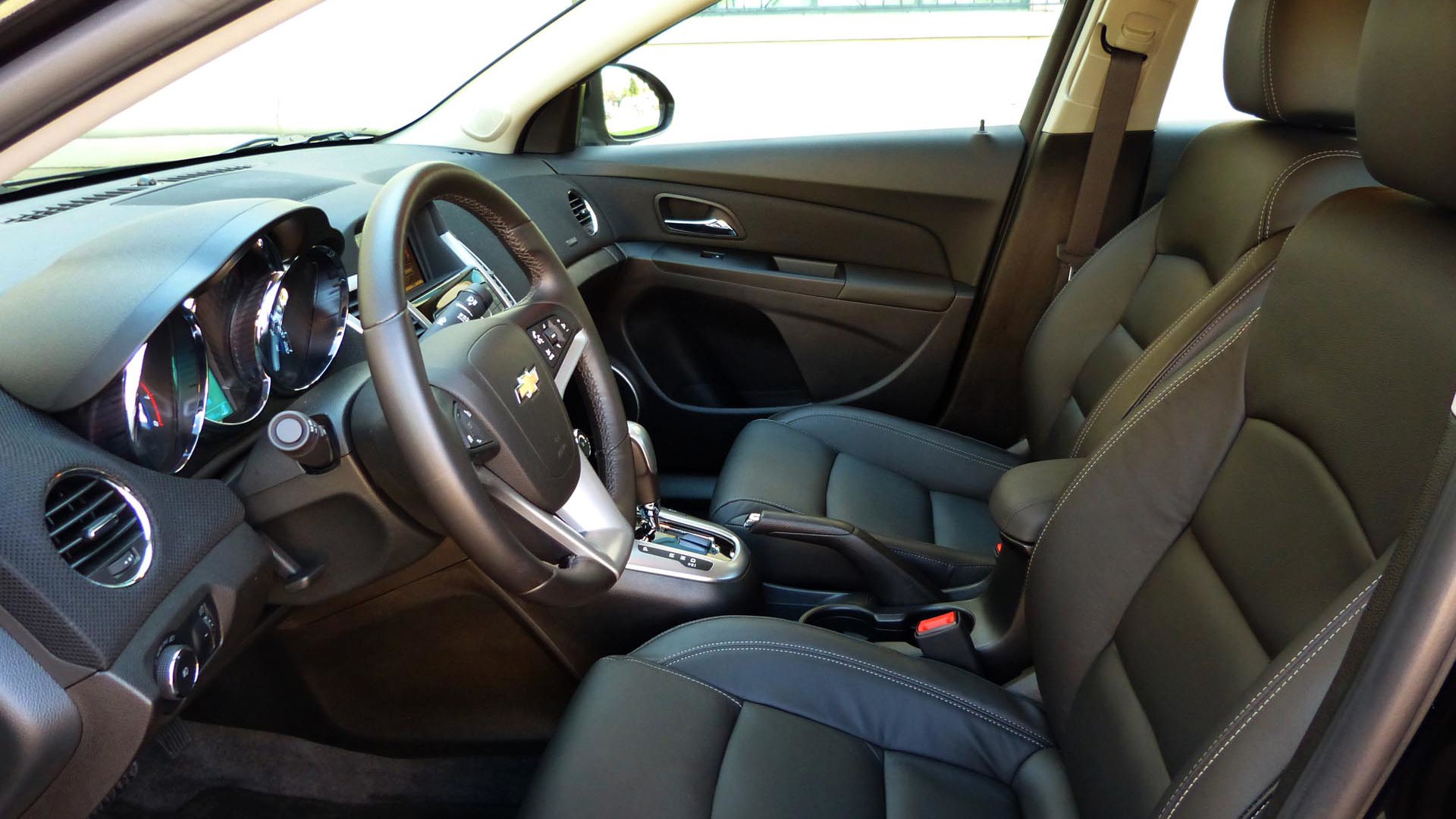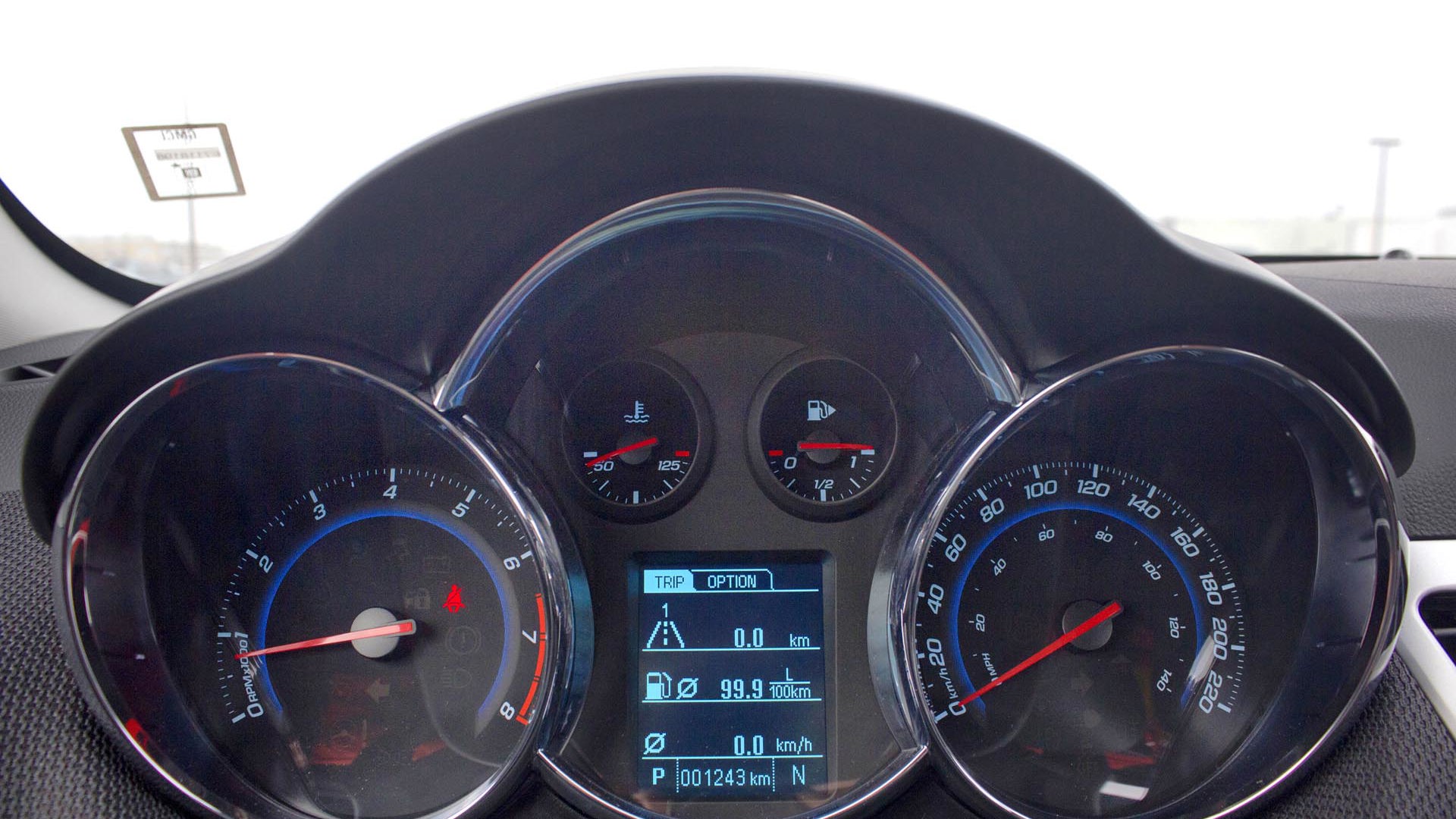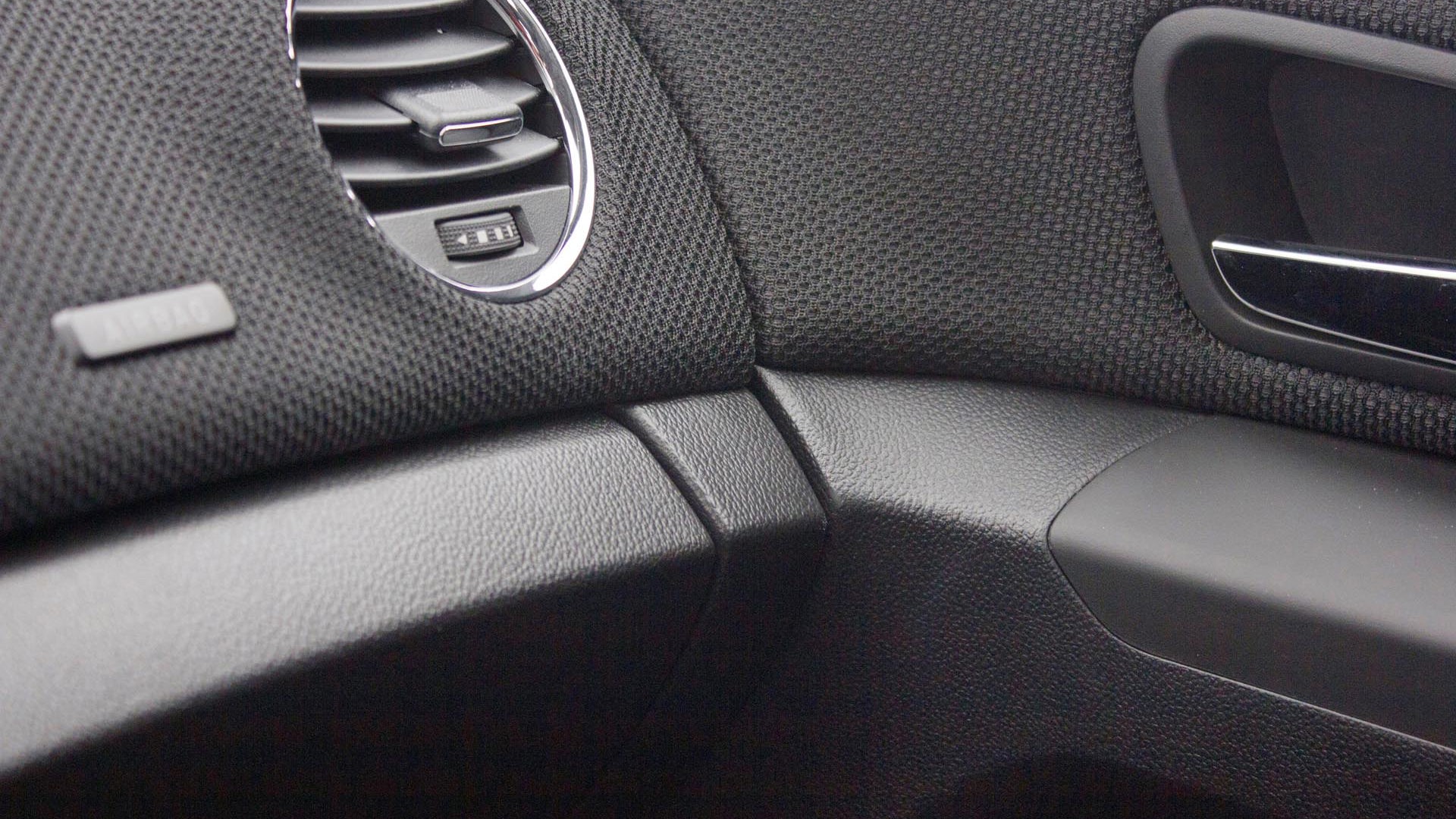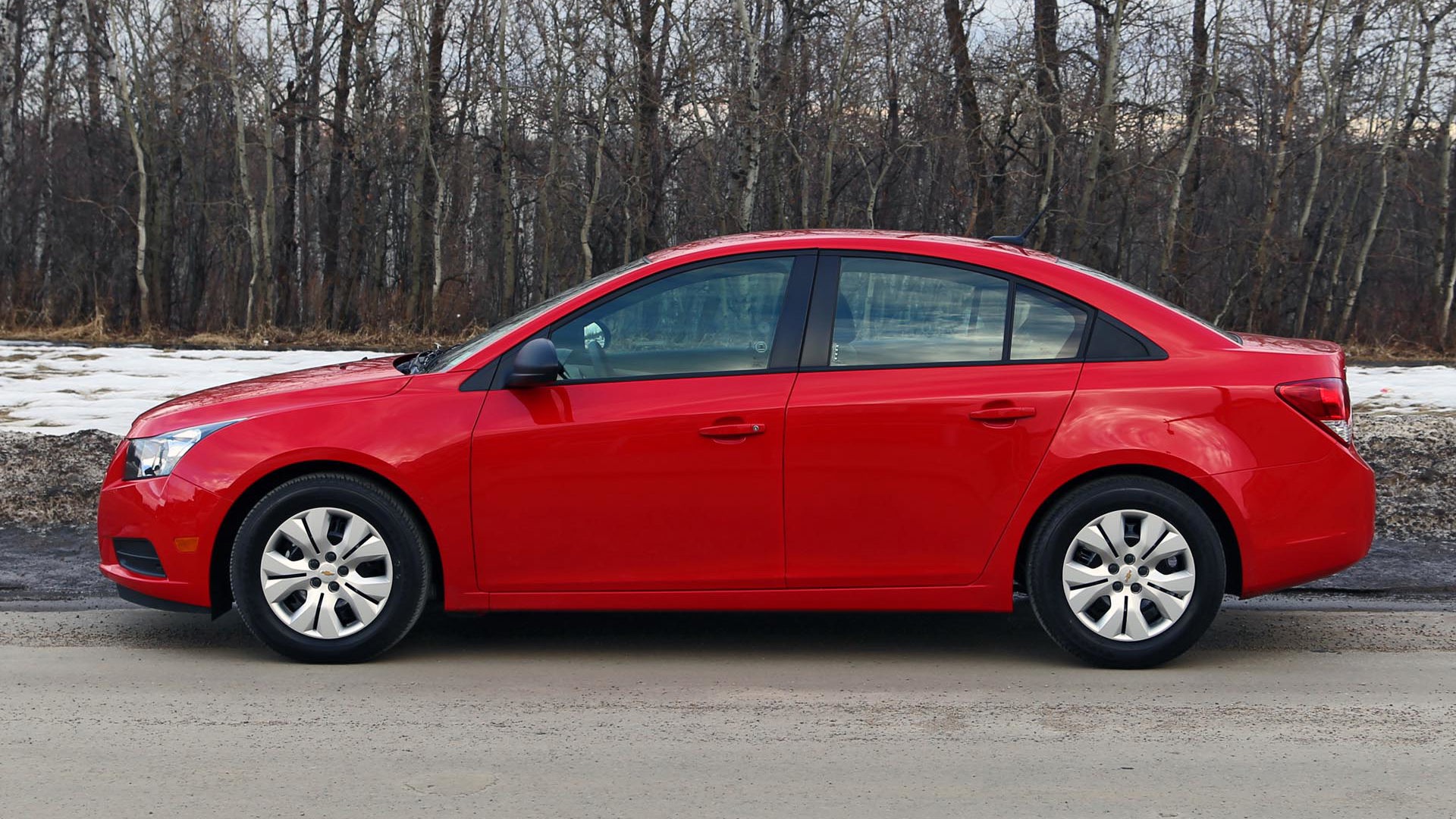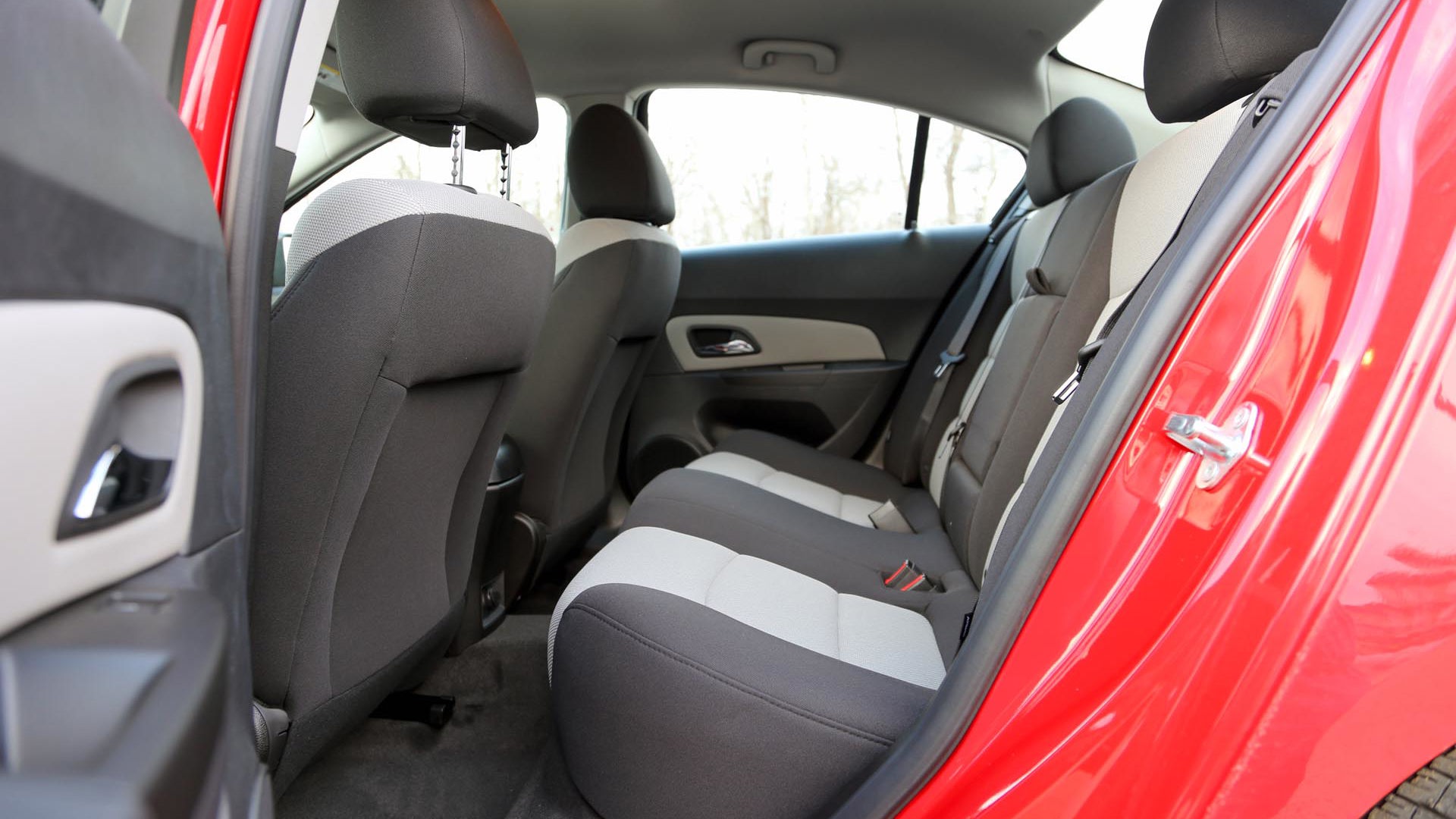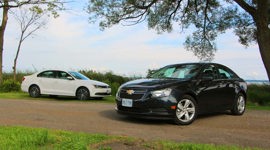Vehicle Type
Compact Sedan
Common owner praise-points include a comfortable and pleasant ride, higher-than-expected onboard space, good throttle response and mileage from the small turbo engine, and a quiet and refined drive.
History/Description
Replacing the Cobalt and competing with the Honda Civic, Hyundai Elantra, Ford Focus and Toyota Corolla, the Chevrolet Cruze hit the Canadian market for model year 2011, riding a new European-based platform and hoping to attract customers with top notch efficiency, leading warranty coverage and overall value. With plenty of selection, the Cruze should make an ideal used sedan for a shopper after compact-car space and a pleasant all-around driving experience.
Look for OnStar, heated seats, a sunroof, automatic lights, and above-average at-hand storage facilities for keeping organized on the move. A full suite of advanced safety systems is on board, too.
Cruze has raked in numerous awards from automotive media and industry authorities around the world, earning recognition for safety, value, design, and even a “2011 Canadian Car of the Year” win from the Automobile Journalists Association of Canada (AJAC), and even one of our own Mega Comparison Tests.
Engines/Trim
Look for an LT or LTZ trim grade if you’re after the top-line experience. Most copies of the Cruze in the used market will pack a 1.4L turbocharged four-cylinder engine, or a 1.8L four-cylinder. Six-speed transmissions in either automatic or manual were available. The Cruze Eco, which came only with a manual transmission, featured revised aerodynamics, weight reduction, an exclusive final drive ratio, and other fuel-saving implements, and is exceptional on fuel. Notably, your writer achieved the best mileage he’s ever recorded, in a copy of this machine on a test a few years back.
What Owners Like
Common owner praise-points include a comfortable and pleasant ride, higher-than-expected onboard space, good throttle response and mileage from the small turbo engine, and a quiet and refined drive. Most owners say they’ve found their Cruze to be a good overall value.
What Owners Dislike
Typical gripes centre around some of the materials used to trim the Cruze’s cabin, lazy programming logic of the automatic transmission, and potentially uncomfortable seats. The manual transmission is difficult to stall and very forgiving, but driving enthusiasts wish for more bite from the clutch, and a more positive action from the shifter.
Here’s a selection of owner reviews.
The Test Drive
On board, smell for any unpleasant odors, possibly masked with Febreze. Owners have complained of a burnt sugar smell, which could indicate a coolant leak under the hood, or in the vehicle’s heater core, as well as earthy or ‘dirty-sock’ odors, caused by moisture buildup in the HVAC system that results in mildew. Blocked moisture drain tubes may be to blame for the latter issue, and your Chevrolet dealer may offer a mold/mildew cleaning kit to remedy the problem. If you detect any unpleasant smells, have a mechanic check the cooling system and HVAC system for signs of problematic leaks.
Some additional reading here and a list of Chevrolet Cruze smells, and their sources and solutions, here.
Further, check the Cruze’s cooling system pressure cap for signs of coolant leakage, which will require a new, revised cap to remedy. Note that low engine coolant levels are another good sign of a leak somewhere within either the engine cooling system, or the climate control system.
Stumbling performance from the engine, an uneven idle and a check engine light could be the result of numerous issues, including a Positive Crankcase Ventilation (PCV) valve that needs to be changed. This system, unusually, is integrated with the valve cover and valve cover gasket, which may require replacement to remedy. Here’s some more reading. Note that a check-engine light could illuminate for many reasons, but on the Cruze, the PCV system is a likely culprit.
Visit the highway and get the Cruze up to speed, turning the steering wheel slightly to weave (in a safe and isolated location). A ‘notchy’ or ‘sticky’ feel to the steering system could indicate a problem, likely as the result of a bad steering system motor, or a bad bushing in the steering shaft. As this is a safety-related issue, shoppers are advised to be absolutely sure to have any signs of unwelcomed steering system sensations checked out ahead of their purchase at a GM dealer. Note that most owners reporting this issue say that it occurs at low miles, and commonly have it fixed under warranty. More info here.
Ensure the seller will allow you to take the Cruze in question to a Chevrolet dealer for a pre-purchase inspection. In addition to checking the car for common problems, the dealer can advise whether any of the Cruze’s numerous recalls need to be performed to address safety issues.
Finally, note that on-time oil changes are absolutely vital to ensure the turbocharger on a Cruze Turbo will last the life of the vehicle. Be certain the seller was fond of on-time oil changes, and check for signs of turbocharger trouble, including oil leaks from the turbocharger housing, and white, thick smoke from the tailpipes while idling at operating temperature after a cold start, but before driving. This specific operational condition can encourage failing or failed turbocharger seals to leak, causing oil to burn—so ensure the Cruze Turbo you’re testing hasn’t been pre-warmed or driven within a few hours of your arrival. Insist on starting the engine from cold, and letting it idle for 5 or 6 minutes, watching for smoke, and especially on higher-mileage units without full service records.
The Verdict
Used compact sedan options exist with fewer reported issues than the Chevrolet Cruze, though it was a machine loved for space, comfort and refinement. Opt for as new a model as you can afford, seeking to maximize protection from the Cruze’s warranty, where possible. A pre-purchase inspection at a Chevrolet dealer should be considered absolutely mandatory.




































